Foot Pain
Pain in the foot can be
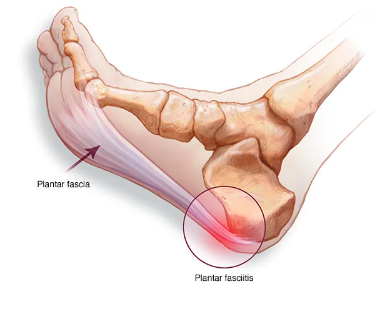 Plantar fasciitis
Plantar fasciitis
This is happens due to the swelling and redness of the band of tissue connecting the heel bone to the toes. Pain due to plantar fasciitis can be felt in the heel or the arch and is usually worse in the morning. Common reasons for plantar fasciitis include high level of physical activity, standing for prolonged periods on hard surfaces, faulty foot structure like flat-foot, tight calf muscles, over-weight or improper footwear
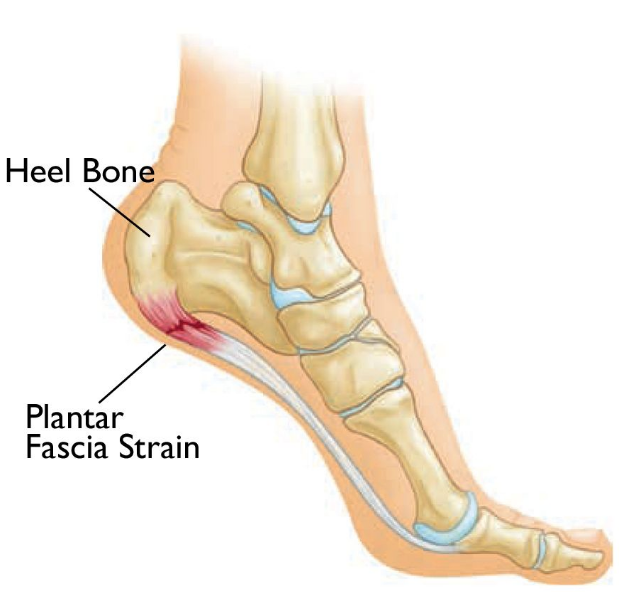 Heel spur
Heel spur
When low grade plantar fasciitis remains untreated for a long time, a bony spur or spike may form where the fascial tissue band connects to your heel bone. Having a heel spur may not cause pain and need not be operated
Direct injury
In case one steps on a hard object such as a rock or stone, you can damage the fat pad on the underside of your heel. The pain might ease away gradually with rest.
 Pain Behind the foot can be
Pain Behind the foot can be
Calcaneal bursitis
The bursa acts as fluid filled cushion when tendons slide over bones. The bursa located at the back of the heel, is known as calcaneal bursa. Excessive use or trauma to the heel may cause the bursa to swell up and become painful, leading to this condition called calcaneal bursitis.
One may experience mild to severe pain in the heel, especially with walking, running or on touching the heel
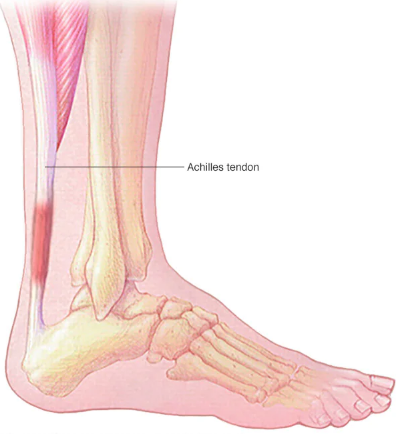 Achilles Tendonitis
Achilles Tendonitis
Achilles tendon connects the calf muscles to the heel. This tendon is used for walking, running and jumping. In this condition the tendon gets swelled up and becomes painful due to overuse of the ankle joint. It often occurs in athletes below 35 years of age, engaged in sports activity involving running or jumping.
The pain starts in the heel and along the length of the tendon while walking or running. The area might swell up, and one may have trouble in standing up on one toe.
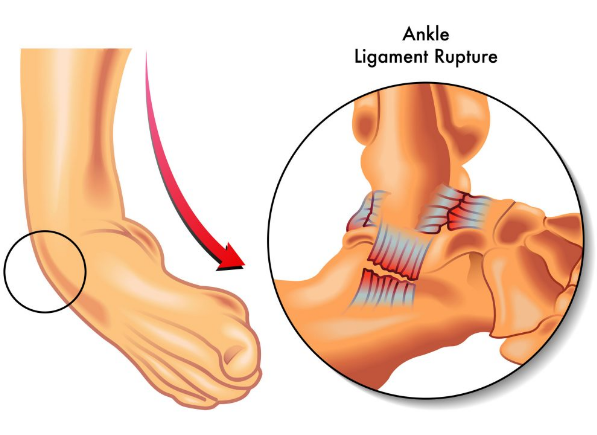 Ankle Pain
Ankle Pain
Pain in the ankle can be
Ankle Sprains
Injury to the strip of ligaments that connect the lower end of the bones of the leg to the foot is known as ankle sprain. It usually happens when one accidentally twist or turn the ankle in sudden manner. This can tear the smaller strips of the ligaments that hold the ankle bones and joints together.
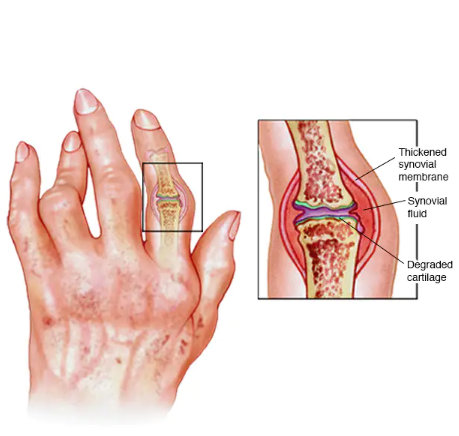 Rheumatoid Arthritis
Rheumatoid Arthritis
It is a disease of the joints that occurs when the one’s own immune system starts destroying the thin membrane (synovium) that lines the joints from inside. This damages the joint surface and cause pain, swelling and disability of the joint. In about 90% patients with rheumatoid arthritis, ankles joint is affected.
Gout
Gouty arthritis occurs when excess uric acid circulating in the bloodstream, is deposited as urate crystals in the tissues of the body and joints. This leads to severe pain and swelling in the foot especially the big toe. Subsequent attacks may occur off and on in other joints, including the ankles. After few years of the disease, deposits of uric acid form beneath the skin around the joints of the foot and ankle..
Treatment of Heel & Ankle Pain
Conservative Care
Rest
Try to avoid walking long distances and standing for long periods
Ice/Hot Fomentation
Alternate hot and cold fomentation might help reduce the pain and swelling.
Regular stretching exercises
Stretching your calf muscles and foot regularly helps reduce the severity of the pain.
Comfort shoes
Proper fitting footwear that support and cushion your foot running shoes are particularly useful.
Brace
Using supportive devices and rigid supports inside your shoe and strapping can help control pain in the ankle and foot.
Interventional Pain management technique
Small joint injections in the ankle & foot have been found to provide significant pain relief in cases where medicines have not given the desired pain relief. Such injections should be followed by regular stretching and exercises for better results.
Platelet Rich Plasma (PRP) Therapy
PRP injection into the joint is one of the most preferred minimally invasive technique for treating pain in the foot and ankle.PRP has been used in many cases of foot and ankle pain, with very positive results. PRP therapy involves injecting platelets from the patient’s own blood to rebuild a damaged tendon or cartilage. It has been successful in not only relieving the pain, but also in starting the healing process quickly. The platelet-rich plasma is injected into the damaged portion of the joint.